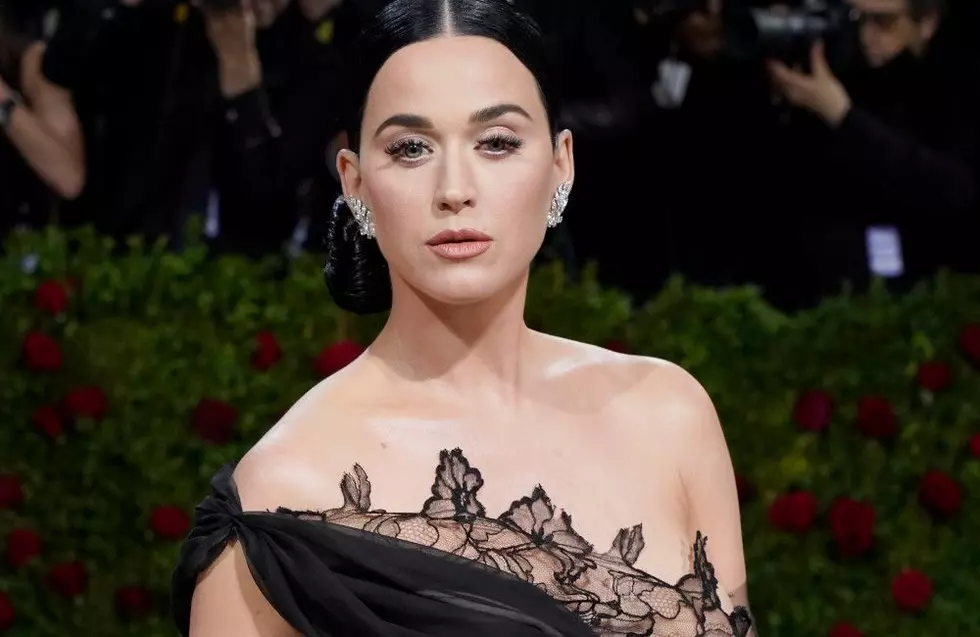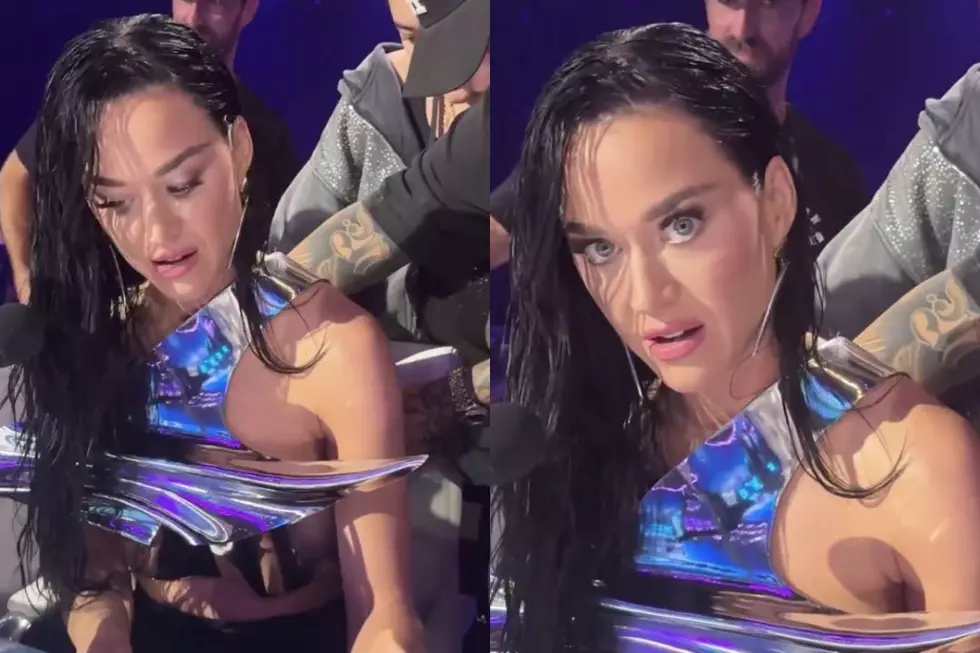
A Gift Idea for the Pop Music Nerd In Your Life: John Seabrook’s ‘The Song Machine’
If you’re a pop fan, it’s hard not to be excited about John Seabrook’s The Song Machine, a book that promises to explore the ins and outs of the pop production line and the people pulling the strings behind the world’s biggest hits.
The Song Machine is an engrossing read. The breadth of music history and voices Seabrook turns into a concise timeline is staggering, and shows his considerable experience as a culture writer for The New Yorker. It’s obvious that serious effort has put into explaining the history of hit radio, the various song factories that have sprung up over the years and the way songs are now written. The main focus throughout is on prolific songwriters and producers like Max Martin, Dr. Luke and StarGate.
Seabrook is willing to challenge his own musical snobbery after a somewhat smug intro, where he decides to explore the Top 40 music his young son is blaring on the radio. As Seabrook commits to his task, he starts to praise undeniable pop classics, writing concisely about why songs like "I Want It That Way" are as great as they are. He clarifies how pop hits meld genres and ideas in numerous ways to find a sweet spot that makes them familiar and chart ready, but still fresh.
The first section is particularly strong: It’s a dizzying tale of how Swedish producers like Denniz Pop and Max Martin came from DJ and rock band beginnings, to admitting their own love of pop, to finding gold with acts like Ace of Base, Britney Spears and the Backstreet Boys.
Along the way, Seabrook sketches out the unusual way these Swedish songsmiths wrote lyrics, not least how the “hit me baby” of Britney’s "…Baby One More Time" was intended as a reference to teen slang — not some weird domestic violence reference many assumed it was.
Seabrook then delves into the world of American Idol and it’s most prolific star, Kelly Clarkson. He goes into the much publicized differences between label honcho Clive Davis and Clarkson in picking her material and shows the way the pop music cycle shifts, cares little for the creative whims of stars and relies on talented songsmiths to fill in the gaps.
He switches gears somewhat by adapting his 2012 piece on K-Pop. At first there’s interesting detail, and a sense that the book could go into territory even the most ardent fan of the US Top 40 wouldn’t know, but ultimately, it becomes a somewhat unfulfilling diversion, trying to both understand K-Pop’s appeal and wonder why it has a cult following of its own in the US.
Seabrook is on firmer footing in the next segment, expanding on his excellent 2012 Ester Dean piece to explore Rihanna, and how pop’s biggest stars came to be the face of the hit machine. It illustrates how, even after an assault at the hands of Chris Brown, Rihanna still had to maintain a hit factory to keep the hit songs coming.
Here, the story of Norwegian pop geniuses StarGate and their relationship with Ester Dean is vividly brought to life. Seabrook breaks down the difficulties for those tasked with writing toplines for pop hits. We learn the system is set up to favor the beat-makers over topline creators. He outlines the difference between the “artist” (i.e. the act that can front the song and sing it to a packed stadium) and the writer, who may languish in the studio forever.
The book then starts to underline the reality for many women in music. There are many female topline writers, but Dean herself discusses the unjust treatment they face, including producers potentially harassing them after long hours in the studio. It’s an interesting point that rises up in the final sections, as Seabrook fully turns to understand the work of Dr. Luke, who manages to both continue working with Max Martin and create his own fizzy pop production, bringing in a rotating cast of new beat-makers, such as Benny Blanco.
The ascent of Dr. Luke from DJ and SNL band member to hit-maker is breathlessly recalled and shows how initial smashes for the likes of Avril Lavigne gave him a footing before his breakout with Flo Rida’s ""Right Round." Seabrook comes unglued here, attempting to vividly retell the making of the song with recollections that read like a cheesy Quentin Tarantino flick — from the phonetics used to illustrate the lingo a stripper uses who accompanies Flo Rida to the studio, to the hokey explanation behind plucking then-unknown Kesha from some scuzzy dwelling in L.A.
The success of Katy Perry and what it meant to the Luke/Martin hit-making process is delved into, and at its most interesting when we see Perry’s co- writer Bonnie McKee attempt to launch her single, "American Girl."
Seabrook captures interactions between McKee and Dr. Luke, and pulls interesting quotes from McKee about the realities of writing within tightly defined pop song structures. Seabrook delves into the Kesha situation too, laying out both her rise to success with Dr. Luke-produced material and her insistence on her using her own material for a follow up.
He doesn’t shy away from discussing the ongoing Kesha/Dr. Luke lawsuit either, but seems to somewhat side with Luke, using a quote from an insider in their team to suggest that their dispute is much more about contractual wrangling then actual assault. Of course, it’s a matter still being decided on by the law, but it’s a weird moment that reflects the imbalance of power between the men controlling many pop strings and the women who write or front it.
Seabrook closes by looking at the way Spotify is both altering how we listen to music and covers the oft-discussed idea that its structures for paying out royalties really only benefit the upper tier of musicians. It’s not new stuff, but the way he illustrates Spotify’s odd mix of tech startup mumbo jumbo and the very real negotiations they had to do with labels is well handled.
Seabrook’s outro tackles his own cynicism about Katy Perry’s "Roar" being a hit after an initial awkward encounter with Dr. Luke, and returns to talking about his children and their enjoyment of pop music; his son now shifting to typical indie fare, while his daughter laps up the latest Katy Perry hit.
Seabrook’s focus on Max Martin, Stargate and Dr Luke is savvy, but what he omits begins to speak volumes. Apart from one solitary paragraph, the influence of Timbaland and The Neptunes on the charts isn’t thoroughly discussed. While Seabrooke shows how poorly pop treats women, influential hit machine voices like Sia, Kara DioGuardi and Cathy Dennis warrant passing mentions, with no attempt to look at how these kind of women form an important part of the pop matrix. How Calvin Harris and David Guetta have molded pop production never comes up, Lady Gaga’s run as a hit factory unto herself at her peak doesn’t warrant a mention, or even a quick look at how producers like Diplo rejigged the way hit songs are written.
If you’re a pop geek whose paid attention to interviews over the last few years, there’s not much here that will be new to you, but what Seabrook does is provide an excellent primer on a part of pop history that is often somewhat confusing to understand.
Ultimately, The Song Machine is a testament to the fascinating world of pop songwriting and tells a story that will likely only become more and more complex.
10 Female Pop Songs About Self-Service Love
More From PopCrush









